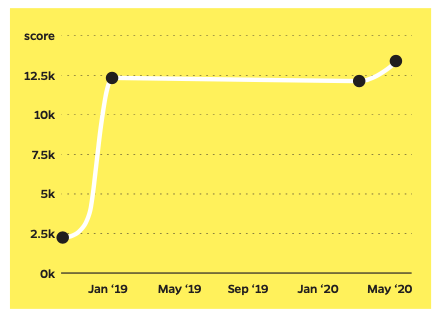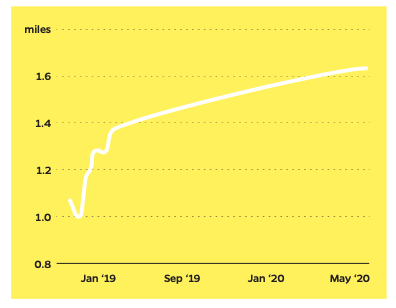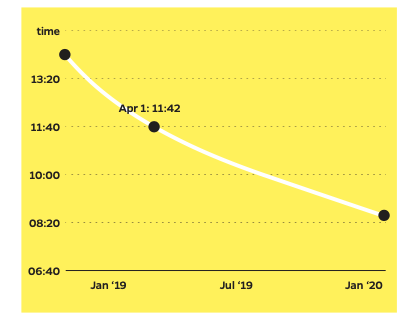When it comes to developing the fitness of everyday athletes, we always address four main areas: Health, movement, strength, and cardio. Each of these areas are broken down into specific testing elements by our Strength Matters Assessments.
In total, we analyze scores from 252 data points. The tests are easy to administer, some challenging to complete, and they provide a plethora of information for us to make better, more informed decisions concerning the needs of each everyday athlete.
The 2000m row test falls under part one of the cardiovascular assessment process. It’s what we refer to as a “work capacity snapshot.” In this article, I want to share with you the story of Terry Moore and how we helped her unlock a faster 2000m row.
Table of Contents
The Case Study
Name: Terry Moore
Age: 56
Country: USA
Occupation: Health Care
Original 2,000m Row Time: 14:12
New 2,000m Row Time: 8:29
Time to Achieve: 18 Months
You will find a lot of information online on how to achieve elite rowing times, but there is little or no information to be found on how take novice rowers to intermediate levels and beyond whilst overcoming the myth that cardiovascular training is brutally hard and can never be enjoyable.
I will always argue that most people perform cardiovascular training way beyond their capabilities – it’s like asking someone who’s never deadlifted 3 x bodyweight to keep trying to do it having never even deadlifted half their bodyweight before.
We don’t do it in strength training so why do we default to this type of methodology when it comes to the cardiovascular system?
Now in Terry’s case, it’s important to understand the bigger picture of her overall cardiovascular assessments so I would like to share with you three other data points we collected right at the start of her journey:
- Average Daily Step Count: 2,432 steps per day
- 20 Min Walk Test: 1.04 Miles
If we would have only looked at her row time at the start, we would have automatically assumed that Terry has a rowing problem therefore she must do more rowing.
However, taking these other data points into account we approached her training plan with the understanding that Terry had no aerobic base to support cardio.
We needed to start at ground zero and build her tolerance levels to cardio training up – which starts with good old walking.
At the minimum, we look for an average step count of 7,000 steps per day for healthy individuals, though ideally, it would be closer to the 10,000-step mark.
For the walk test (how far can you walk in 20 minutes) we looking for a score of above 1.5 miles. Terry was somewhat off these benchmarks. As simple as the metrics are, they are so key for the enjoyment of cardiovascular exercise.
If there’s no aerobic base, a workout like the 2,000m row test is going to become a symbol of fear, loathing, and dread. To alleviate the pain she already associated with the test, here’s how we approached improving Terry’s 2,000m row without prescribing any rowing.
Stage 1: Walking for Volume
The first thing we instilled in Terry was better walking habits. Like so many working professionals, her daily step count was below 3,000 steps per day on average. We set out to gradually increase this over time. The graph below shows these changes:

In just over a month, we increased her daily step count from 2,432 to 3,335 per day. A minimal change to some, but it kick-started something inside of Terry because in the period between months two and three it skyrocketed to an average daily step count of 12400 steps per day.
Here is where it stayed for another 14 months, until recently in May 2020 it increased again to 13,342 after a month of attempting to reach 15,000 steps per day. Consistency has been Terry’s friend throughout this period of transition and shows how the simple act of walking more can quickly become a habit if practiced regularly.
Stage 2: Walking for Speed
After a period of consistency in her volume and frequency of steps, we then went about tackling the speed at which she was walking. The thought process was let’s start to rev that engine of hers up. Once a week, Terry performed the 20 minute walk test. Just as the number of steps she walked daily increased, so did her speed over time. From a humbling 1.04 miles at the start to achieving 1.64 miles in May 2020.

Stage 3: Hello Rower (Again)
After the initial testing of her 2000m row in October 2018, I asked Terry to re-test in April 2019, six months later. She scored an amazing 11:42, over two minutes faster than her previous best effort. All whilst having not rowed since.
It was only then that we started to reintroduce the row erg as part of her workouts. She had a better base and we wanted to continue her cardio development.
The workouts on the row erg we prescribed were “easy” in nature. We focused on volume first, often pairing it with other strength training exercises two to three times per week. Not once did we push her out of her comfort zone, though we were able to expand that comfort zone over time.
We kept it this way for over a year until she tested again, and she achieved a remarkable 8:29.5, nearly six minutes faster than her original time. Terry went from a novice to an intermediate rower. She has a yearlong base of aerobic development behind her and is now ready to embark on those elite training programs you read about online.

Lessons You Can Learn from Terry
A lot of everyday athletes chasing faster 2,000m row times often miss the biggest parts of the cardiovascular training puzzle – the addition of more sustainable volume and spending more time building their aerobic base. They tend to attack the 2000m row by training faster, harder, and for longer.
That’s a short-term approach that leads to unsupportive foundations. As everyday athletes, we look at the long-term approach to health and fitness, which means not just being able to perform great athletic feats but to also be able to recover faster from them.
If you’re reading this and wondering about your aerobic base, here’s something to ask yourself:
- Men: Can I currently row 2,000m on a Concept 2 faster than 7:10 minutes?
- Women: Can I currently row 2,000m on a Concept 2 faster than 8:10 minutes?
If the answer is no, you need a bigger aerobic engine. It’s that simple.
Don’t underestimate the power of walking. Walking activates the small aerobic muscle fibers which are not usually stimulated by higher-intensity aerobic workouts and can help circulate blood and improve lymph drainage (important to the body’s waste-removal system).
It benefits everyone, from beginners to competitive athletes alike, by building their aerobic base and assisting with workout recovery and even some injuries. It should always be a part of your training.
Cardiovascular development should be an enjoyable journey, yet too many people are fearful of it and equate it with pain, suffering, and misery. Understand your limits, adapt accordingly, and build from there. Who knows? Your 2000m row time could drop by six minutes too, just by walking more.
Terry’s Thoughts on Getting a Faster 2000m Row
Further Reading
FAQ
How Long Should a 2000m Row Take?
The time it takes to row 2000m varies based on fitness level, technique, and experience. For beginners, anywhere from 9-12 minutes is typical, while elite rowers can complete it in under 6 minutes.
How to Row 2000m in 8 Minutes?
Achieving a 2000m row in 8 minutes requires consistent training, proper technique, and pacing. Focus on stroke rate, power output, and incorporating interval training into your regimen to reach this milestone.
Is a 7 Minute 2K Row Good?
A 7-minute 2K row is considered an excellent time and suggests a high level of fitness. It indicates good strength, endurance, and effective rowing technique.
Is It Hard to Row 2000 Meters?
Rowing 2000 meters can be challenging, as it tests both your aerobic and anaerobic systems. The difficulty depends on the individual’s fitness level, experience, and the intensity at which they row.
What is a Good 2000m Row Time for Beginners?
For beginners, a 2000m row time of 9-12 minutes is typical. It’s essential to focus on proper technique and consistency as you progress.
What is a Good 2000m Row Time for a Woman Beginner?
For beginner women, a 2000m row time of 10-13 minutes is common. As with all beginners, technique and consistent training play crucial roles in improving time.
What is Considered a Fast 2000m Row Time for Beginners?
A fast 2000m row time for beginners would be under 9 minutes. However, it’s important to prioritize technique over speed initially.
How Can Beginners Reduce Their 2000m Row Time?
Beginners can reduce their 2000m row time by ensuring proper rowing form, incorporating interval training, focusing on consistent stroke rate, and building overall strength and endurance.
What’s the Average 2000m Row Time for Beginners?
The average 2000m row time for beginners typically falls between 9-12 minutes, with many factors like age, fitness level, and technique influencing the exact time.
What is a Good 2000m Row Time for Male Beginners?
For male beginners, a 2000m row time of 8-11 minutes is typical. Remember, mastering technique is paramount in the early stages.
What is a Fast 2000m Row Time for Male Beginners?
For male beginners, anything under 8 minutes for a 2000m row can be considered fast. However, focusing on proper form will ensure long-term progress and injury prevention.
What’s the Average 2000m Row Time for Male Beginners?
The average 2000m row time for male beginners generally ranges from 8-11 minutes, with variables such as age, fitness background, and technique affecting the time.


What method besides walking would you use to build someone’s aerobic capacity if thet cannot walk fast or for long due to knee problems? can you use the rower to to progress them instead? if so how would that look in terms of programming and progressing?
Rower or assault bike, or even a pelaton. Just try and keeping going for a consistent 30 minutes at Zone 2 or below 180 – age level…